Operators
 United Kingdom
United Kingdom
| Avro 558 | |
|---|---|
| Role | Ultralight Biplane |
| Manufacturer | A.V.Roe and Company Limited |
| First flight | 1923 |
| Introduction | 1923 |
| Number built | 2 |
The Avro 558 was a British single-engined ultralight biplane built by Avro at Hamble Aerodrome.
The Avro 558 was designed for the 1923 light aircraft trials for single-seaters at Lympne Aerodrome. Two Avro 558 biplanes were built, they were biplanes powered by motorcycle engines (one with a B&H twin-cylinder air-cooled engine, the second with a 500 cc Douglas engine). The first aircraft was modified with a 698 cc (42.6 in³) Blackburne Tomtit and both had modifications to the landing gear.
The aircraft did not win the competition, but the second aircraft went on to establish a world record for its class of aircraft of 13,850 ft (4,222 m) over Lympne on 13 October 1923. [1] It is not known what happened to the two aircraft, not having been reported since 1923.
Data from Avro Aircraft since 1908 [2]
General characteristics
Performance
Aircraft of comparable role, configuration, and era

The Avro 549 Aldershot was a British single-engined heavy bomber aircraft built by Avro.

The Avro 555 Bison was a British single-engined fleet spotter/reconnaissance aircraft built by Avro.

The de Havilland DH.53 Humming Bird is a British single-seat, single-engine, low-wing monoplane light aircraft first flown in the 1920s.

The ANEC I and ANEC II were 1920s British single-engine ultralight aircraft designed and built by Air Navigation and Engineering Company Limited at Addlestone Surrey. One was privately constructed in Brisbane, Australia.
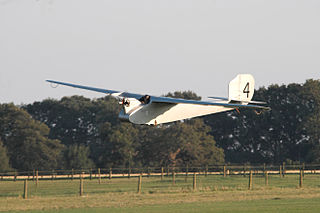
The English Electric Wren was a 1920s British ultralight monoplane built by the English Electric Company Limited at Lytham St Annes, Lancashire.

The Avro 560 was a British single-engined ultralight monoplane built by Avro at Hamble Aerodrome.

The Avro Club Cadet was a 1930s single-engined British biplane trainer aircraft, designed and built by Avro as a development of the earlier Cadet. It was planned for private and club use and, unlike the Cadet, was fitted with folding wings.
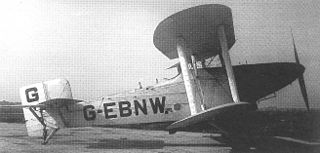
The Avro 571 Buffalo was a prototype British carrier-based torpedo bomber biplane, designed and built by Avro in the 1920s. It was not selected for service, the Blackburn Ripon being ordered instead.

The Avro 627 Mailplane was a British biplane developed in 1931 by Avro from the Avro Antelope bomber as a mail plane for use in Canada. Only one was built which ended up being used as a test bed.

The Avro 641 Commodore was a British single-engine five-seat cabin biplane built by Avro in the mid-1930s for private use. A total of only six were built, including the prototype.

The Avro 510 was a two-seat racing seaplane designed by Avro to compete in the 1914 Circuit of Britain Race. It was a conventional two-bay biplane of greatly uneven span, equipped with two large central floats and two outriggers. The race was called off at the outbreak of the First World War, but the British Admiralty was aware of the type and ordered five examples, with modified floats and tail. In service, these proved completely unsuitable, and it was discovered that with a second person aboard, the aircraft could barely fly. In October 1915, the 510s in service were sent to Supermarine for modification and improvement, but by March the following year all were removed from service.
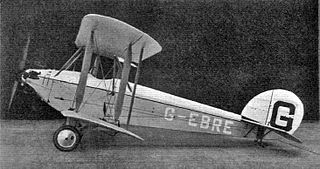
The Blackburn L.1 Bluebird was a British single-engine biplane light trainer/tourer with side-by-side seating, built in small numbers by Blackburn Aircraft in the 1920s.

The Avro Type 557 Ava was a British twin-engined biplane torpedo bomber of the 1920s. It was developed by Avro to meet a requirement for a heavy torpedo bomber for the Royal Air Force but was unsuccessful, only two prototypes being built.

The Supermarine Sparrow was a British two-seat light sports aircraft designed by R.J. Mitchell and built by Supermarine at Woolston, Southampton.

The Avro 562 Avis was a two-seat light biplane designed and built by the A.V.Roe and Company Limited at Hamble for the 1924 Lympne Light Aeroplane Trials.
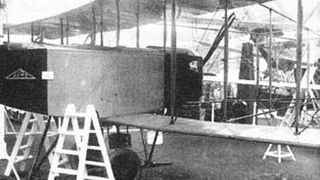
The Avro 508 was a prototype British reconnaissance aircraft of the 1910s.

The Blackburne Tomtit was a 670 cc V-twin aero engine for light aircraft that was designed and produced by Burney and Blackburne Limited. Burney and Blackburne was based at Bookham, Surrey, England and was a former motorcycle manufacturer.

The Vickers Viget was Vickers' entrant for the first Lympne light aircraft competition, held in 1923. It was a single-seat, single-engined biplane with folding wings.
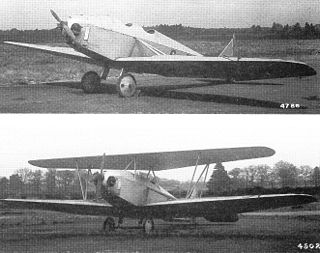
The Parnall Pixie was a low powered British single-seat monoplane light aircraft originally designed to compete in the Lympne, UK trials for motor-gliders in 1923, where it was flown successfully by Norman Macmillan. It had two sets of wings, one for cross-country flights and the other for speed; it later appeared as a biplane which could be converted into a monoplane.
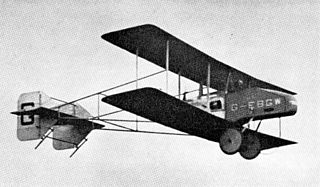
The RAE Zephyr was a single-seat, single-engined light pusher configuration biplane designed and built by the Aero Club of the Royal Aircraft Establishment (RAE) for the 1923 Lympne Motor Glider Competition. At a late stage the Aero Club chose to enter the more promising RAE Hurricane instead, using the Zephyr's engine, and the Zephyr itself was abandoned.